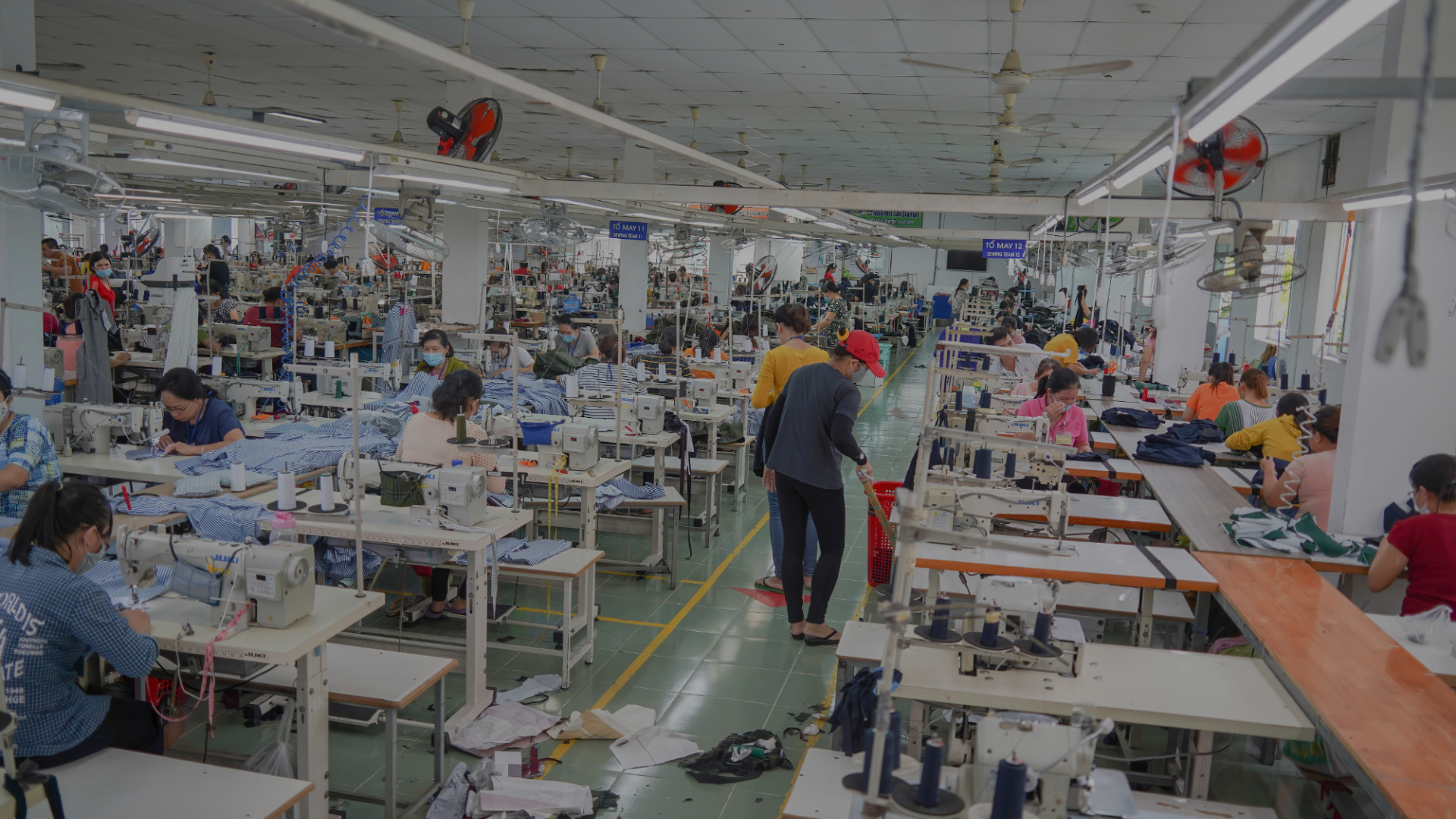Key Takeaways:
- A new milestone report from MMGNET, in partnership with The Interline reveals the extent to which fashion roles across the extended product lifecycle use technology today, charts the expectations they have for its impact in the next twelve months and beyond, and looks forward at the convergence of industry strategy and software in 2025.
- The latest edition of the wider industry benchmark report, The State Of Fashion, from Business of Fashion and McKinsey, spotlights complex global forces, the influence of AI on product discovery, challenges in inventory and allocation, and more. The Interline sees a potentially technology component to the solutions to each.
Fashion & Technology in 2025
This week, MMGNET – the fashion ecosystem, community, and portfolio of live industry events – released its first fashion technology report, in partnership with The Interline. Readers can browse top-level findings and obtain their copy from today.
The report “Fashion & Technology In 2025” is a milestone look at how fashion professionals see the relationship between strategy and software, a new baseline for understanding how ubiquitous technology usage has become amongst fashion professionals, and a roadmap for how AI, 3D, and sustainability are shaping not just technology plans but all-round industry transformation.

Assembled from a global survey of more than 160 fashion organisations, the report demonstrates the real scope of the challenges facing brands, retailers, designers, and suppliers, and sets a new mandate – across more than 50 pages – for what those various stakeholders want technology to do for them.
The full report is available to register for and read today, and The Interline will be spotlighting the most important findings from it next week.
Documenting fashion’s response to turmoil – with a technology slant.
This week the Business of Fashion (BoF) and McKinsey & Company released their annual State of Fashion report, which remains a great reference point for understanding wider market conditions.
In short, the sentiment is that the tough economic times that everyone has been expecting are now upon us. Though growth opportunities remain, economic volatility, regional disparities, and shifting consumer behaviours mean they will not be easy to seize. To thrive in this tricky environment, brands now need to carefully manoeuvre through a series of interconnected challenges – and using technology will play a central part in doing so.

Continuing our own annual tradition, The Interline has pinpointed three of the top findings from the 10 key themes in the report. We’ve then used these as springboards to explore the potential impact that technology could have – whether it’s complicating an issue further, or providing a clear-cut conclusion.
This year, up for analysis are a small set of pointed headings: Global Trade Transformation, Technology Reshaping Traditional Discovery and Search, and Strategies for Inventory Success. Each of these three forms part of the broader areas of Global Economy, Consumer Shifts, and the Fashion System, respectively (the report remains well-structured and labelled, as it has been in previous years).
In each of those three categories, we believe technology has a role to play, and our team have jotted down their initial thoughts on where fashion can scale its technology roll-outs – in AI, data collection, tracking and traceability, and more.
Global Trade Transformation
As well-ringfenced an industry as it is, macroeconomic change has always affected fashion. What is new is just how much those wider changes are being felt by fashion professionals, and how disruptive they have become for even the most venerated names in fashion – with even luxury mainstays now needing to set out public recovery plans.
That potency is down to a couple of interconnected reasons: unprecedented geopolitical tension that has severely affected supply chain operations; a new level of regulatory pressure when it comes to sustainability; and capricious consumer behaviour, whereby a shift in the amount of disposable income is only the tip of the spear when it comes to shoppers being mercurial with their money.
According to BoF and McKinsey’s research, there has been more than a 165% increase in Asia-to-US shipping costs between December 2023 and February 2024 due to logistics disruptions; five times the amount of trade restrictions since 2015, with around 3,000 imposed in 2023; and 63% of fashion brands need to accelerate emission reduction efforts to reach 2030 targets. Upstream, the picture is bleak.

These obstacles are encouraging fashion brands to shift towards nearshoring and sourcing from geopolitically aligned regions to strengthen supply chain resilience. In recent years, China, Germany, the UK, and the US have significantly shortened the geopolitical reach of their sourcing practices.
There are many benefits to this, with the main one being that fashion companies could now have more control over their sourcing footprint, especially if using a technology platform that can provide analytics and detailed supplier data. Technology can also here be used as a collaboration tool in order to work more closely, flexibly, and effectively with suppliers. This can be in terms of communication, and also for data sharing so that all parties can build resilience and productive supply chains.
With growing disruption and volatility in sourcing, close collaboration has become a necessity rather than a suggestion. To maximise the benefits of technology, fashion brands and suppliers need to embrace digital tools throughout their value chains, prioritise process improvements, elevate data quality, and integrate planning systems to ensure full visibility and coordination across all partners.
Technology Reshaping Traditional Discovery and Search
When it comes to shopping, despite people’s pursestrings getting tighter, we still live in the era of excess, availability, and accessibility. There are limitless options online when it comes to products that consumers may want; which sounds like a good thing, but in reality can be debilitating. Shoppers are overwhelmed with choice, which negatively impacts their engagement and conversion rates with brands and retailers.
And these days, using the search bar on a brand or retailer’s website is not good enough; fashion shoppers want hyper-personalisation, curation, and choices. This is why AI-powered discovery, of both brands and products, has been transforming how content and search are tailored to consumers – something The Interline has written about extensively this year.

According to BoF and McKinsey, 82% of shoppers are open to having AI help cut down their research time when deciding what to buy. So far, one case study is Zalando, whose seemingly-successful integration of generative AI tools has contributed to an 18% increase in profitability year-over-year for Q2 2024. Key features like a ChatGPT-based shopping assistant, personalised recommendations, and curated content have apparently enhanced customer engagement while helping to reduce operational costs.
But what is happening when it comes to search and discovery using a good old search engine? Or, for a more timely question, with a brand-new search platform like the new capabilities of ChatGPT? Google has unambiguously established a monopoly in internet search and discovery. For over decades, online discovery of content and products has involved being presented with a list of links and previews, with users needing to click through to explore further – despite the often unpredictable ranking of those links.
But now, this familiar model has rapidly shifted: the default for Google searches will prioritise an AI-generated summary, whose origins and ranking criteria are not fully transparent, over traditional links. This is a point that The Interline has emphasised before: this shift is more than a minor update to one Google feature; it’s a sweeping transformation of how the internet functions. This change will impact companies relying on the internet as even a secondary sales channel, with far-reaching consequences for online commerce and consumer interactions.

The magnitude of this shift for brands and retailers cannot be overstated. As this space evolves, direct-to-consumer brands need to be mindful of how quickly these changes are occurring. In the near future, the methods consumers use to find products could be unrecognisably different, and staying ahead of this shift will be critical for brands to ensure their products remain visible and accessible.
To do so, brands and retailers should establish a strong AI foundation by selecting the right technology partners and ensuring their product content is optimised for AI-powered search. Focusing on high-value use cases through a test-and-learn approach will help brands achieve reliable results and improve customer experience before expanding. Clear guidelines for internal teams are also necessary to ensure AI-generated content stays true to the brand’s tone and core values.
Strategies for Inventory Success
Inventory remains a challenge for the industry with both excess stock and stock- outs impacting brands. In terms of the former, the fashion industry produced between an estimated 2.5 billion and 5 billion items of excess stock in 2023, worth between $70 billion and $140 billion in sales. This is just not going to fly anymore, as in 2025, there will only be greater as margin pressures increase and fast-approaching sustainability regulations will place greater emphasis on end- to-end planning excellence.
A key regulation that is going to affect excess stock is the Ecodesign for Sustainable Products Regulation that will require brands in the EU to report on the management of excess stock in 2025 and will make it illegal to destroy unsold products in 2026. Similarly, in August 2024, California became the first US state to approve the Extended Producer Responsibility programme for textiles, requiring apparel players to submit a plan for collection, repair and recycling of goods by July 2030.
As for stock-outs, the obvious upshot is the missed revenue opportunity. The State of Fashion report gives the figure as high as 20% as the average loss in brands’ monthly profit due to inaccurate stock buying across sizes. But the effects can also cause customers to become frustrated and look elsewhere, potentially leading to lost business that might not be recaptured in future. A stock-out can also suggest to customers that the brand isn’t reliable, which can harm its reputation over time.

Why is it still so difficult to achieve inventory excellence?
The answer is layered, as the reason is due to several interrelated factors. First, the rise of micro-trends in the past few years has created demand volatility, with trending styles fluctuating by up to 300% within a year, making it difficult to accurately forecast demand. Fast-fashion giants like Shein have exacerbated this by dramatically shortening their speed-to-market times, sometimes to as little as 15 days, further tightening the window for inventory planning. Climate change has also complicated inventory management by creating unpredictable weather patterns that disrupt demand patterns. Fluctuating temperatures make it harder for brands to predict which products will sell, leading to excess stock or missed sales opportunities.
That the fashion industry’s supply chain is complex is also an obstacle. The complex routing of goods through various retailers, brands, and manufacturers results in long lead times, limiting flexibility and making it harder to respond to shifting demand quickly. With ongoing supply chain disruptions, brands face even more challenges in maintaining inventory flow.
Lastly, the growing number of sales channels complicates inventory management further. Consumers now purchase fashion items through a variety of touchpoints, making it difficult for brands to provide consistent size and colour availability across all channels, especially when they don’t operate a unified stock pool. These factors combined make inventory excellence a moving target for many fashion brands.
This is an area where technology is really the only way forward to keep track of all the – literal – moving parts. Relevant technology platforms and tools can improve inventory planning by providing brands and retailers with better data insights, forecasting capabilities, and real-time visibility into their supply chains. Advanced analytics and AI-powered tools can help predict demand more accurately by analysing historical sales data, current trends, weather patterns, and even social media sentiment. This enables companies to adjust their stock levels proactively, reducing the risk of insufficient stock levels.

To optimise inventory planning, brands should also prioritise data transparency and integrate data across various retail functions, ensuring connections between multiple systems. It is crucial to understand and address existing data handovers and potential translation issues between systems or teams, which can hinder accurate forecasting.
Cloud-based platforms and inventory management systems (IMS) can provide real-time data across all sales channels, giving brands a unified view of inventory. This transparency allows for more efficient stock allocation – ensuring that products are available where they’re needed most, whether in stores or online. These systems can also automate reordering processes, helping brands and retailers replenish stock more efficiently based on demand fluctuations.
Technologies like RFID (Radio Frequency Identification) devices can track inventory throughout the supply chain, providing real-time updates on product movement, stock levels, and potential bottlenecks. This kind of visibility helps brands respond to disruptions quickly – including delays in shipping or stock shortages – and allows them to make adjustments in real-time to meet consumer demand.
In terms of AI, algorithms can optimise pricing and promotions, adjusting based on inventory levels and demand trends. For instance, if certain items are overstocked, dynamic pricing tools can adjust prices to accelerate sales, ensuring that inventory moves quickly without sacrificing profitability.
Lastly, using a shared technology platform that involves suppliers and being open to sharing insights and data can enhance end-to-end visibility, allowing for early identification of disruption indicators. This collaborative approach ensures that all parties have the necessary information to make informed decisions, leading to more accurate inventory management and a smoother, more resilient supply chain.
A Short Spotlight On Sustainability
Linked in with better inventory management is sustainability. Fashion companies should ideally have sustainability in mind when doing their inventory planning. This can be done by adopting an approach that aligns environmental considerations with operational strategies.

Along with the optimisation of stock levels to avoid overproduction, which contributes to waste, brands and retailers can prioritise circularity. Brands can incorporate sustainable materials and design practices that promote product reuse and recycling, ensuring that products are manufactured with their end-of-life in mind. By collaborating with suppliers and manufacturers who also focus on sustainability, fashion companies can integrate eco-friendly processes throughout the supply chain. For instance, working with suppliers to implement cost-effective energy efficiency measures can help balance the financial impact of more expensive sustainability initiatives, like developing sustainable materials.
As the fashion industry moves forward, data will become the cornerstone of sustainable practices. Companies must track their entire supply chain, including tier-three suppliers involved in raw material processing, to ensure better visibility and improve data accuracy. This foundational work is necessary for establishing achievable sustainability targets, identifying key decarbonisation initiatives, and assessing their impact.
Best from The Interline:

Kicking off this week, Aasia D’Vaz-Sterling explores the thread from ethical action to sustainable production, and why supporting supply chain workers will be essential to fashion’s future.

Next up Lectra shared their latest e-guide, on discovering how to best navigate discounts this season and stay ahead of the curve thanks to AI-powered market intelligence!

Next, we spoke with Lectra’s Chief Strategy and Product Officer on the importance of sustainability in fashion, emphasising traceability, technology integration, and Industry 4.0 practices to balance environmental responsibility with economic growth while meeting regulatory demands and consumer expectations.

And closing out the week, Gemma A. Williams decodes the consumption and production trends of China’s fashion market.

